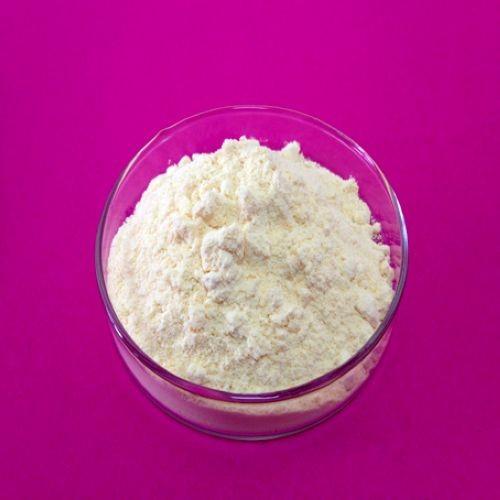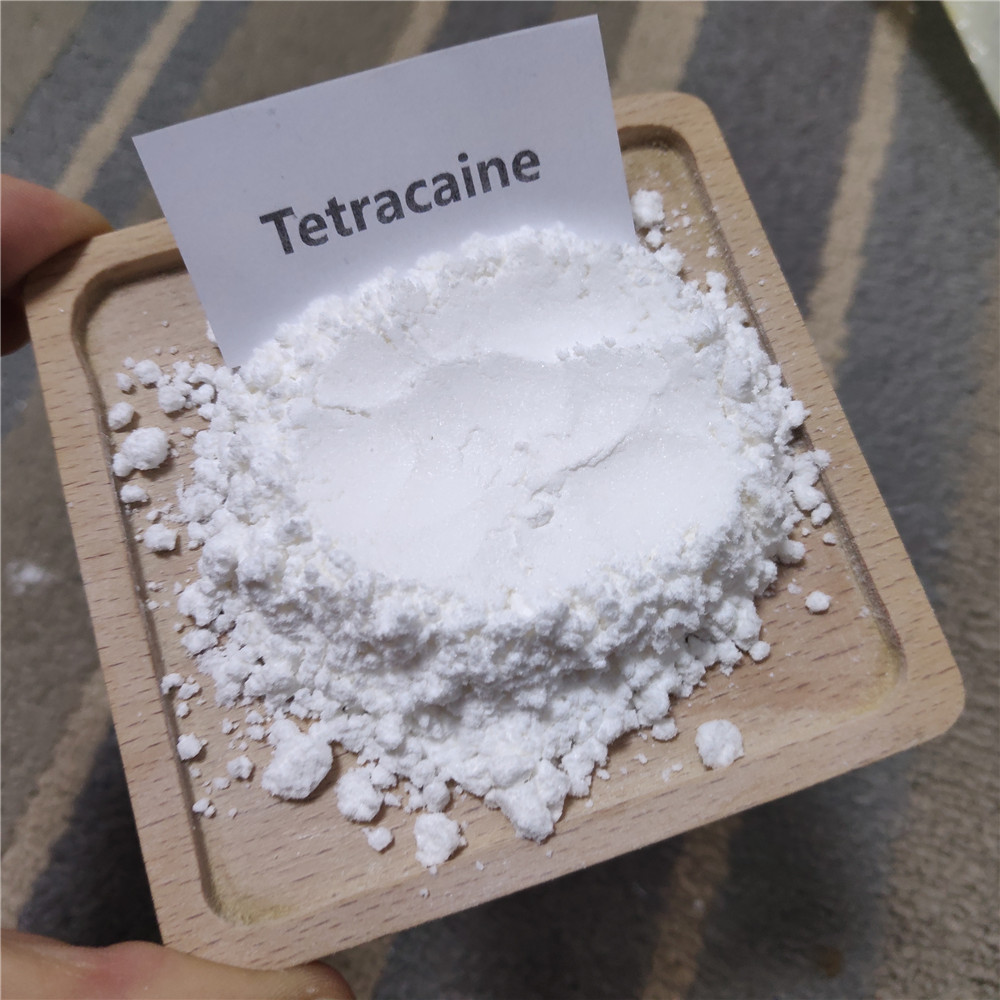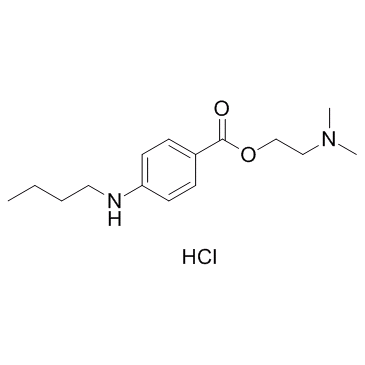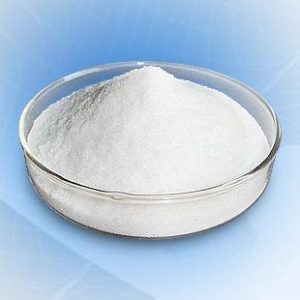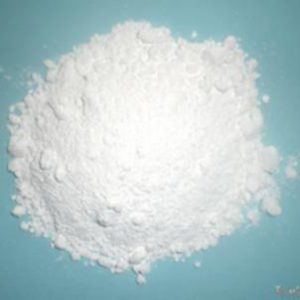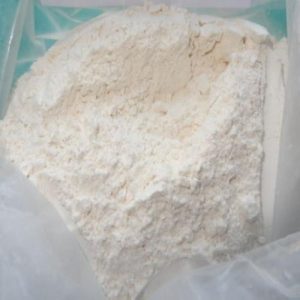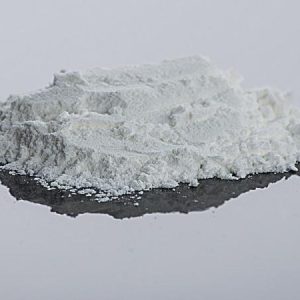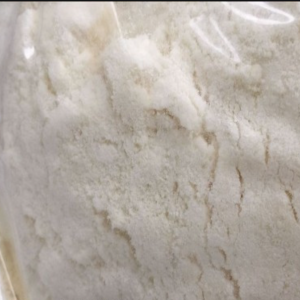Tetracaine, also known as amethocaine, is an ester local anesthetic used to numb the eyes, nose, or throat. It may also be applied to the skin before starting an intravenous (injection) to decrease pain from the procedure. Typically it is applied as a liquid to the area. Onset of effects when used in the eyes is within 30 seconds and last for less than 15 minutes.
Common side effects include a brief period of burning at the site of use. Allergic reactions may uncommonly occur. Long-term use is generally not recommended as it may slow healing of the eye. It is unclear if use during pregnancy is safe for the baby. Tetracaine is in the ester-type local anesthetic family of medications. It works by blocking the sending of nerve impulses.
Use of Tetracaine hydrochloride powder
Tetracaine HCl is a potent local anaesthetic and a channel function allosteric inhibitor.Target: Calcium Channel It is a calcium channel protein inhibitor and blocks voltage-sensitive release of Ca2+ from sarcoplasmic reticulum. Tetracaine is a potent local anesthetic of the ester group. It is mainly used topically in ophthalmology and as an antipruritic, and it has been used in spinal anesthesia. Tetracaine is used to alter the function of calcium release channels (ryanodine receptors) that control the release of calcium from intracellular stores. Tetracaine is an allosteric blocker of channel function. At low concentrations, tetracaine causes an initial inhibition of spontaneous calcium release events, while at high concentrations, tetracaine blocks release completely.
Therapeutic Function Local anesthetic
General Description It is a local anesthetic drug and an ester derivative of p-amino benzoic acid. It acts by interfering with the entry of sodium ions into nerve cells and is one of the commonly used topical anesthetics.
Biological Activity tetracaine hcl is a potent local anaesthetic and a channel function allosteric inhibitor.It is a calcium channel protein inhibitor and blocks voltage-sensitive release of ca2+ from sarcoplasmic reticulum. tetracaine is a potent local.
Biochem/physiol Actions Blocks voltage-sensitive release of Ca2+ from sarcoplasmic reticulum.
Contact allergens Amethocaine is a local anesthetic used in dental surgery. It was reported as an agent of contact dermatitis in dentists or dental nurses and in ophthalmologists
Side effects Tetracaine hydrochloride is in the ester-type local anesthetic family of medications. It works by blocking the sending of nerve impulses. common side effects include Transient stinging, burning, and conjunctival redness, eye irritation, eye pain, ocular discomfort. Allergic reactions may uncommonly occur. Long term use is generally not recommended as it may slow healing of the eye. It is unclear if use during pregnancy is safe for the baby.
Health effects Tetracaine hydrochloride
(TTC) is a long-lasting local anesthetic commonly used for topical anesthesia, which is water-soluble, has strong penetrability and a good anesthetic effect. However, TTC has a higher cytotoxicity compared with other local anesthetics due to its high permeability. Previous studies have reported that TTC exerts a cytotoxic effect on certain cell types, such as human corneal stromal cells and human corneal epithelial cells, inducing apoptosis and necrosis. Research jave found that large doses of intrathecal TTC increase the concentration of glutamate in cerebrospinal fluid, thereby causing neuronal injury in rabbits. In addition, AMPA receptor activation was revealed to be involved in TTC-induced neurotoxicity in the spinal cord.
TTC-induced apoptosis may be triggered through Fas death receptors and mediated by Bcl-2 family proteins, in a mitochondria-dependent pathway. TTC-induced human corneal epithelial (HCEP) cell apoptosis via a death receptor-mediated mitochondrion-dependent pathway. Low concentrations of TTC induced the apoptosis of human T-lymphoma cells, whereas a higher concentration of TTC induced necrosis[1].
Clinical claims and research Topical administration of It Ophthalmic Solution, USP 0.5% results in localized temporary anesthesia. The maximum effect is achieved within 10–20 seconds after instillation, with efficacy lasting 10–20 minutes. Duration of effect can be extended with repeated dosing.
Tetracaine hydrochloride Chemical Properties
Melting point 149°C
density 1.1279 (rough estimate)
refractive index 1.5200 (estimate)
storage temp. 2-8°C
solubility alcohol: solublesoluble 40 parts of solvent
pka 8.39(at 25℃)
color White to Almost white
Water Solubility Soluble in water at 50mg/ml
Merck 14,9188
InChI InChI=1S/C15H24N2O2.ClH/c1-4-5-10-16-14-8-6-13(7-9-14)15(18)19-12-11-17(2)3;/h6-9,16H,4-5,10-12H2,1-3H3;1H
InChIKey PPWHTZKZQNXVAE-UHFFFAOYSA-N
SMILES C1(C=CC(NCCCC)=CC=1)C(=O)OCCN(C)C.Cl
LogP 3.649 (est)
CAS DataBase Reference 136-47-0(CAS DataBase Reference)
EPA Substance Registry System Tetracaine hydrochloride (136-47-0)
More Introduction:https://en.wikipedia.org/wiki/Tetracaine
